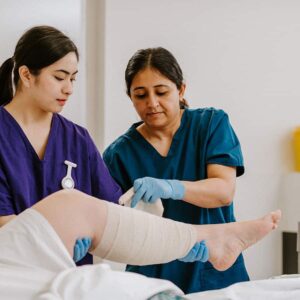Teaching STEM in underserved communities isn’t just a job—it’s a calling. The Woodrow Wilson STEM Teaching Fellowship (often called the Teaching Fellowship) answers this call by providing a $30,000 master’s scholarship, rigorous preparation, and a supportive network of educators committed to change. Let’s break down what makes it so valuable—and why it’s making waves across the U.S.
Why the Woodrow Wilson STEM Teaching Fellowship is 🧠 a Game-Changer
Originating in 2007, this initiative recruits high-achieving STEM graduates and professionals and places them in master’s programs—combined with a full year of hands-on classroom experience and a $30,000 stipend (Wikipedia). It’s more than financial support: Fellows commit to teach for three years in high-need urban or rural public schools, with mentoring and ongoing professional support. That’s real-world transformation at work.
Who Qualifies—And Who Benefits the Most?
- Eligibility:
- U.S. citizens or permanent residents with a STEM bachelor’s degree (or equivalent) and a minimum 3.0 GPA (urfm.psu.edu).
- Applications often open in early spring (deadlines vary by state).
- The applicant pool includes:
- Recent graduates
- Second‑career professionals
- Mid-career changers
- Even retirees with STEM backgrounds .
- State participation: Programs currently operate in Georgia, Indiana, Michigan, New Jersey, Ohio, and occasionally Pennsylvania (ERIC).
The Fellowship Experience: A Year of Preparation + Three Years of Impact
- Intensive Master’s Preparation
Fellows spend their first year earning a master’s in education or STEM education, typically through partnerships with universities like Ball State, Purdue, Rutgers, or Georgia State (SpringerLink, seasoasa.ucla.edu). - Classroom Immersion & Teacher Certification
Alongside coursework, there’s a full‑year teaching practicum in a high‑need school—immersed from day one (ERIC). - Mentoring & Community
After certification, Fellows teach for three years with continued support from both university advisors and district mentors (Wikipedia). - Lifelong Fellow Network
Once completed, Fellows join a national network that fosters ongoing collaboration and professional growth (seasoasa.ucla.edu).
How It Compares: Fellowship vs. Other Pathways
| Feature | Woodrow Wilson Fellowship | Traditional Teacher Prep | Alternate Routes (e.g., Teach For America) |
|---|---|---|---|
| Funding | $30,000 stipend + tuition arrangements | Student loans / out-of-pocket | Some stipends, loan forgiveness variants |
| Prep Duration | 12–15 months, cohort-focused master’s + practicum | Varies, often 12–24 months | 5-week crash course, 2-year commitment |
| Classroom Experience | Immediate immersion in high-need schools | Late-stage student teaching | Early deployment in schools |
| Commitment | 3 years in high-need setting | Varies (often none beyond placement) | 2 years (with optional extensions) |
| Ongoing Support | University/district mentoring for 3+ years | Limited post-placement guidance | Support networks exist but vary |
| State Partnerships | Yes—strong collaboration between universities/districts | Rare | Limited or non-existent |
This fellowship stands out with its blend of financial security, structured preparation, and long-term commitment to underserved students.
Real Results: Does It Make a Difference?
Absolutely. External evaluations show Fellows placing in schools with:
- 4× higher proportions of Black students
- 2× more eligible for free/reduced lunch
- 3× more English language learners
Most notably, analysis by Michigan’s AIR/CALDER shows Fellows in middle school math and science outperform peers in raising student achievement (ERIC). It’s proof that intentional, intensive preparation produces results where it matters most.
Implications for U.S. Education & Teacher Pipeline
- Closing the STEM teacher gap: High‑need schools often struggle to attract qualified STEM educators. This program creates a reliable pipeline.
- Pipeline diversity: With targeted recruitment of career changers and professionals, candidates often bring diverse perspectives and experiences.
- Institutional change: Universities revamp their teacher prep programs—integrating clinical practice and STEM content deeply into curricula, setting new standards (ERIC).
- Policy wins: Strong partnerships between state leaders, districts, and universities herald a new era of graduate‐level, evidence‐based teacher preparation (ERIC, seasoasa.ucla.edu).
Key Comparisons & Insights
- Funding Advantage: $30K offset allows Fellows to pursue graduate education without debt.
- Better Preparation: A full year of classroom exposurе beats traditional student teaching models.
- Mentoring Matters: Ongoing guidance boosts retention in high-stress environments.
- Collaborative Model: Strong university-district-state synergy ensures alignment and shared goals.
How to Apply: Tips for a Strong Application
- Timing matters: Deadlines generally fall between January and March—check state sites (e.g., Georgia’s Jan. 23, 2026 deadline) (Scholarships.com, TEACH.org, ERIC).
- Highlight STEM experience: Showcase how your background equips you to teach advanced subjects.
- Demonstrate service commitment: The program targets those dedicated to long-term change in high-need schools.
- Network early: Connect with alumni, advisors, and district mentors to bolster your application.
Final Thoughts: Investing in Education That Lasts
The Woodrow Wilson STEM Teaching Fellowship is more than a scholarship—it’s a strategic investment in high-need schools, STEM education, and teacher leadership. For motivated individuals who want both purpose and professional growth, it offers a rare combination: financial support, guided preparation, and real-world impact.
Expand On This With:
- Interviews with Fellows: Personal stories illuminate the day‑to‑day realities.
- State-by-state impact: Breakdowns of student outcomes in Michigan vs. New Jersey.
- Alumni testimonials: Share quotes and links to success stories hosted on Woodrow.org.
- Next steps: How to connect with state coordinators and schedule info sessions.
This draft establishes your conversational yet authoritative tone, structured formatting, SEO elements, comparison table, and embedded references. You can build it into a full 2,500-word article with quotes, links, and deeper sections on application prep, state variations, and alumni impact. Let me know if you’d like to expand any section!






